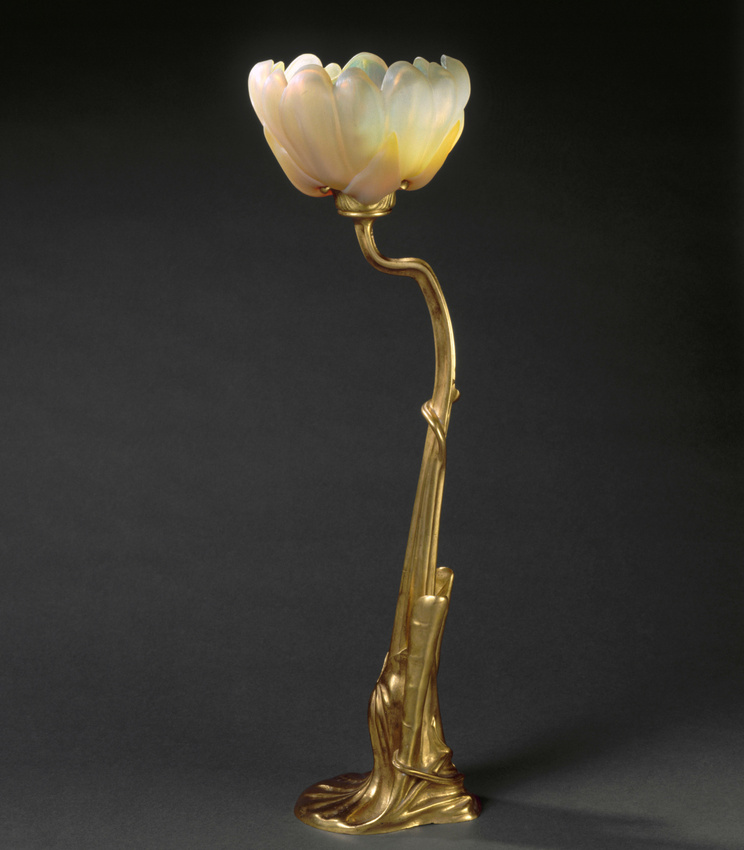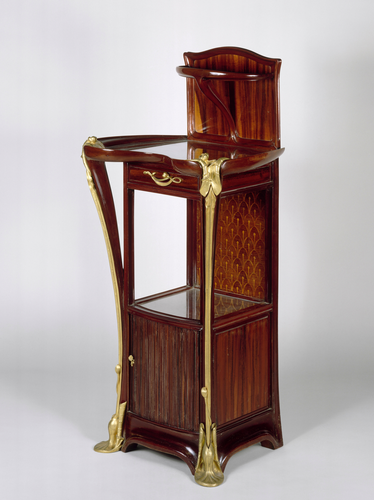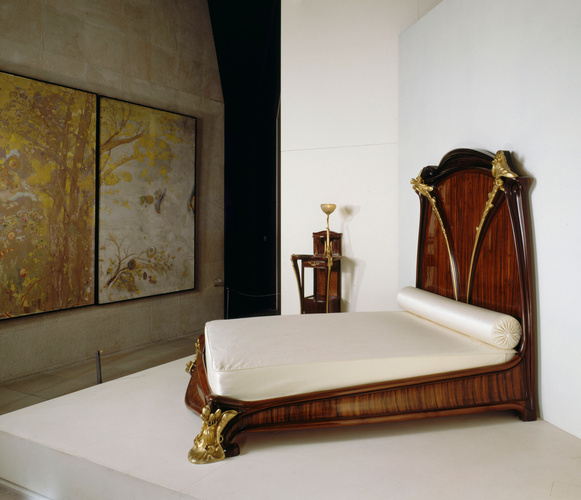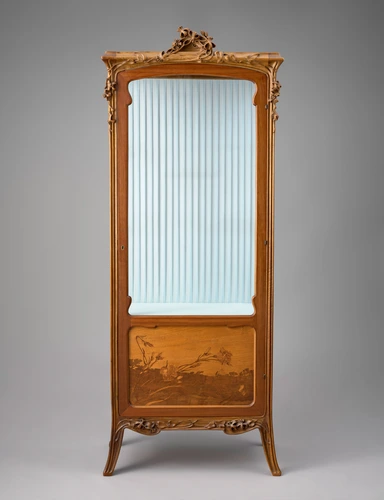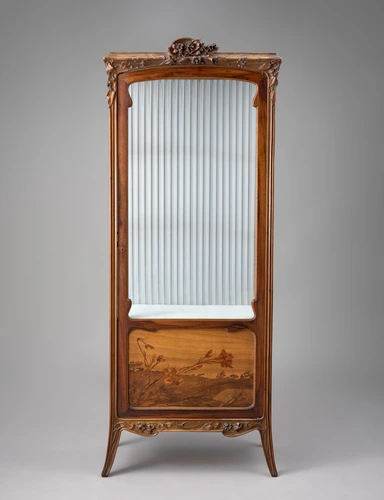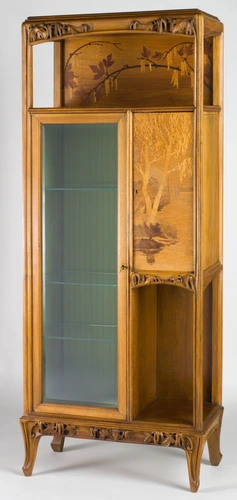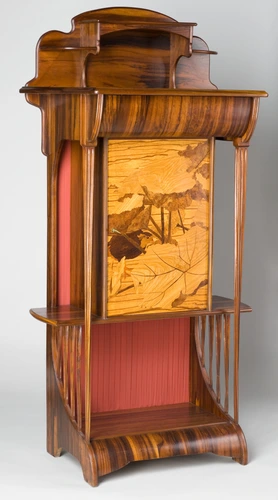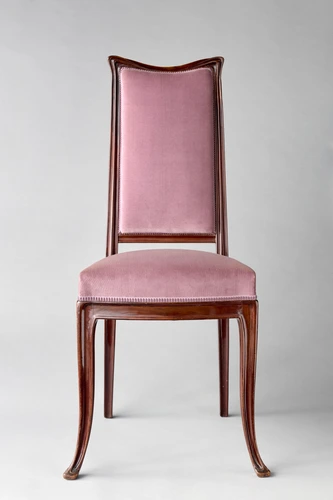Nénuphar
Although Gallé was somewhat late in applying his skills to electric lighting, it was an area that offered great scope for the Naturalist trends he advocated. He admitted it himself in 1902 in a letter to his friend Roger Marx: "I am busy working on some lights. I should have started 4 or 5 years ago" (letter dated 19 January 1902).
On the other hand, two other great names from the Ecole de Nancy, Louis Majorelle and the Maison Daum, had collaborated on several lamps that they presented at the Universal Exhibition of 1900. For this joint project, drawn up in 1898, the glassmakers of the Maison Daum undertook to make the glass shade. But the principal designer of the lamps was certainly Majorelle. It was he who provided the basis of the designs, and set out the dimensions and the shape, a water lily in this case. On the whole this shape harmonises with the decorative themes chosen for the bronze handles, lock plates and latches on the furniture that Majorelle produced and distributed through his various shops in France, or sold to an international clientele.


